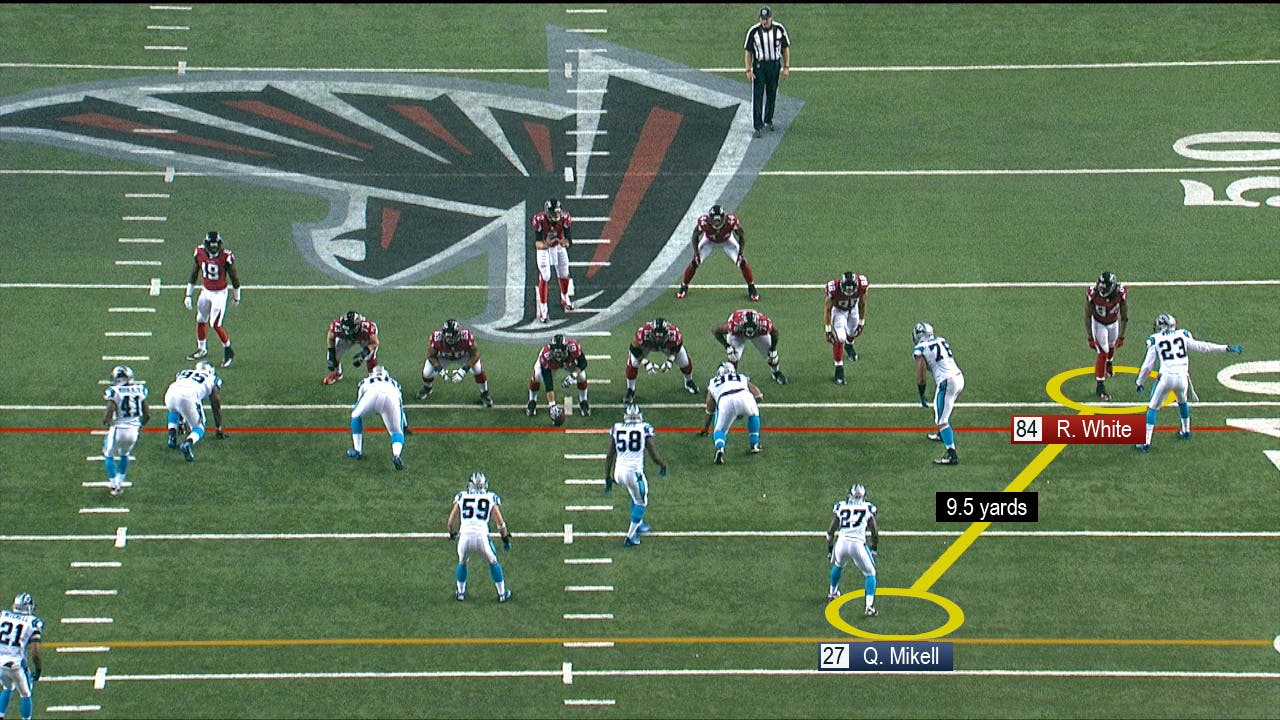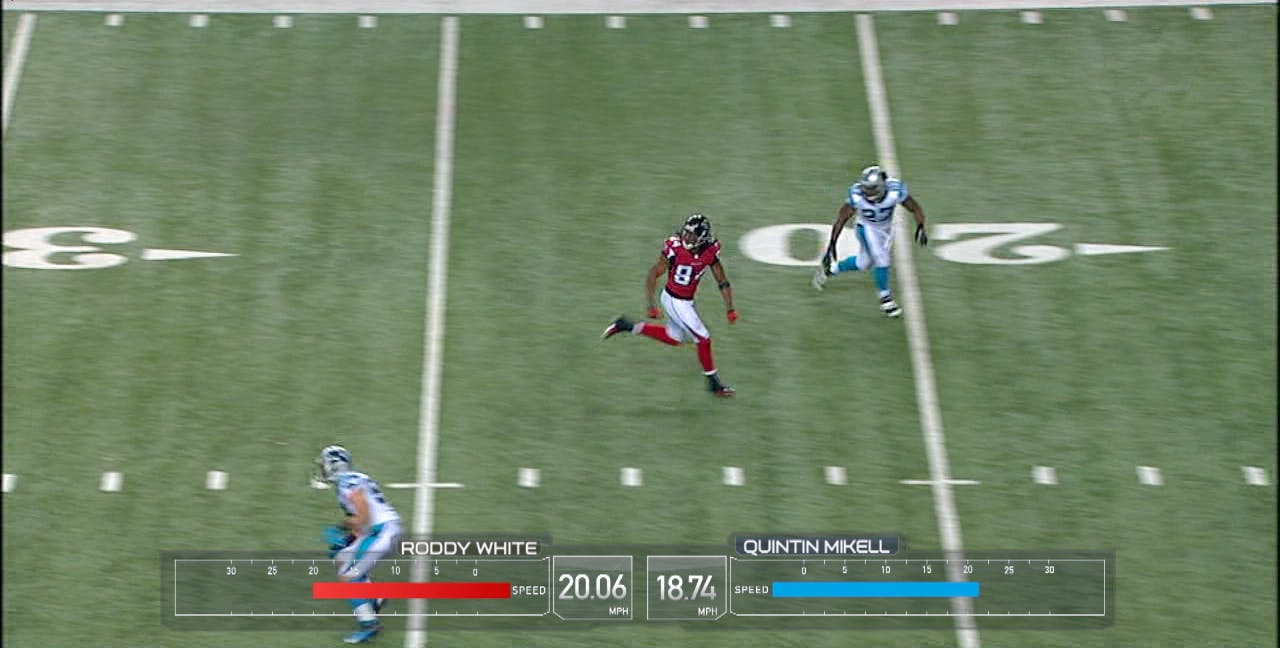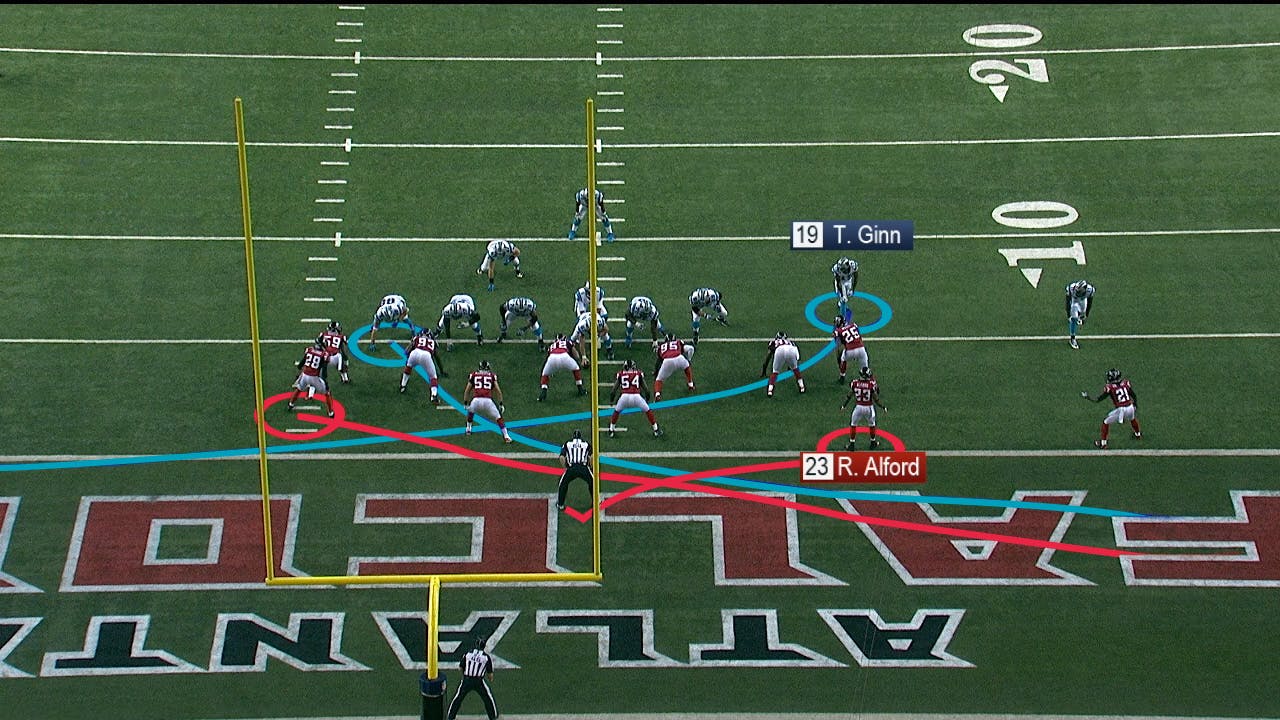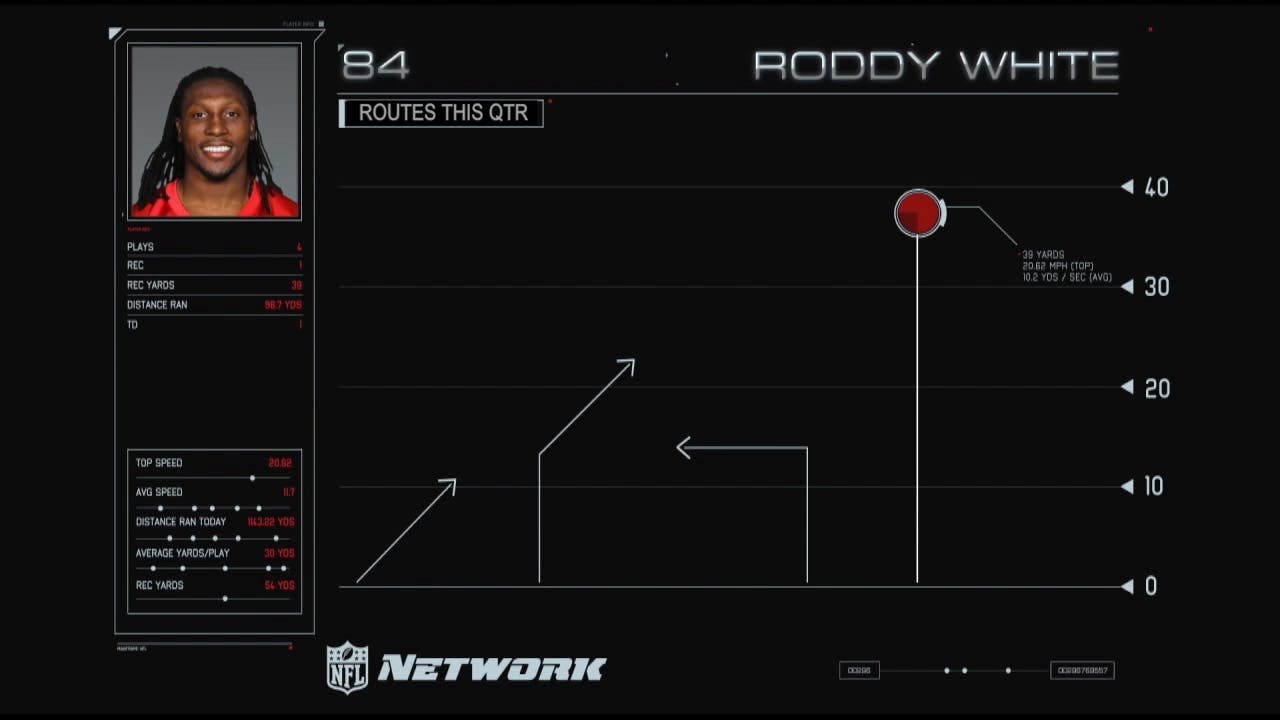Football is a game of giants, but this season a microchip no bigger than the star of a coin toss will decide the fates of those mountain-sized men.
After a limited run last season, the NFL is equipping every player in the league with a radio-frequency identification (RFID) chip. The tiny piece of technology provided by tracking technology manufacturer Zebra Technologies will track the speed, distance, and direction traveled by each player in real-time. The data set, branded as Next Gen Stats, will reveal new insights into the sport, both for fans and front offices.
Much of the broadcast side of football focuses on the quarterback. The cameras stay focused on the field general until the ball leaves his hand, only then darting downfield to follow the ball as it lands in the hands of one of his teammates. That pass only becomes possible when a receiver beats his defender—one of ten individual battles that is happening simultaneously on the field. The RFID chip will provide new insight into those matchups that make the play possible.
“Each player’s shoulder pads are embedded with two coin-sized RFID tags that send signals to RFID readers positioned around the inside of the stadium bowl,” Jill Stelfox, general manager and vice president of Location Solutions for Zebra Technologies, told the Daily Dot.
“The tags send signals 25 times per second that the readers triangulate to a precise location allowing them to show player location within six inches. Tags only have to be installed once and will last for the season.”
One way this information will be delivered to fans hungry for more football will be through the NFL 2015 app for the Xbox One and Windows 10 machines. “The app will include a Next Gen Stats section with features such as the ability to view a player’s speed and the actual distance covered by a player throughout an entire game within highlight clips,” Stelfox explained.
Instead of just looking at the outcome of a play—which is what most stats like throws, rushing attempts, and yards focus on—this new kind of data tracked through RFID chip puts the spotlight on individual players.
A completed pass may gain 15 yards downfield, but the wide receiver will cover a considerable amount more yards to earn that advancement. Running to the middle of the field from the sidelines or making several cuts to beat a defender makes the route taken from snap to catch a much longer path than it appears on the stat sheet. Next Gen Stats can take that into account, providing new appreciation for the running back who sweeps across the field to gain a few extra yards or the wide receiver getting open to save a broken play.
Equally interesting is the information the tiny chip will provide to teams—and how those teams decide to use it.
Football, perhaps more than any other major American sport, has a perception problem when it comes to advanced statistical models. It’s the most violent and physical of the lot and still has a popular mindset that immeasurable intangibles like “grit” and “toughness” are better indicators for success than those born out of algorithms.
Many players also get defined by their draft combine numbers, the raw physical numbers recorded by completing drills like the 40 yard dash and the vertical jump. But those are numbers achieved in isolated training sessions. On the field, it’s more important to figure out how to optimize those physical attributes in a way that improves a team’s chance of success on each play is more important. A linebacker that can do 30 reps of 225 pounds on the bench press might be a physical freak, but if he can’t cover a tight end or make a move to avoid a block, those reps are void.
St. Norbert College professor of economics Kevin G. Quinn published The Economics of the National Football League: The State of the Art in late 2011. In the book, Quinn makes note of the fact that the NFL lags behind most sports, especially baseball, when it comes to stats. Unlike baseball, which saw its statistical revolution develop in-house, Quinn says much of the top thinkers when it comes to advanced stats in the NFL are writing for blogs and the information is more likely to be utilized by gamblers looking for an edge than the scouting department of a team’s front office.
Teams have begun to change their ways, though the process is slow. With access to RFID-tracked data, the efforts could be accelerated.
“From a performance standpoint, the Zebra Sports Solution enables teams to monitor each player during the course of practice, keeping an eye on statistics such as distances run and speeds in practice, to optimize training,” Stelfox said.
“They can also see how players are moving over the course of a game (ex. is a player running with the same pace at the beginning of game vs. the end) to help determine the type of training an athlete should partake in to reach peak performance.”
The idea of peak performance is especially impactful in football. Unlike other sports, where players can often preserve energy during plays in which they are less involved, football demands full effort for the short bursts of time occupied by each play.
Last season, Philadelphia Eagles cornerback Cary Williams complained the team’s head coach Chip Kelly was draining his players during practice, making games more of a slog because too much energy had been exerted throughout the week. Williams’ complaint came after the team’s third straight win to start the season and was roundly dismissed because of the early success. Significant injuries to major contributors eventually caught up with the team, which went 7-6 through the rest of the year and lost three of their last four games, missing the playoffs.
Data imparted from the RFID chip could combat this eventual burnout—and could be even more valuable at the college and youth levels of the sport, where practices have proven just as likely to cause concussions and head damage as in-game action. Adjusting the intensity on the practice field will always be easier than affecting the game itself, and teams now have the technology to tell them when conditions require a change.
When it comes to game time, RFID chips could be the tool to executing at a higher level for teams that know how to analyze and utilize the data. “From a schematics and tactics standpoint, the Zebra Sports Solution enables coaches to dive deeper into the game,” Stelfox said.
Additional insights into how a wide receiver runs a route, what way a running back is most likely to cut, or how a defensive back tends to react in different types of coverages could be the key to winning the little victories that eventually lead to the one that appears in the win column in the standings.
And if teams are able to dive into data collected by RFID chips in the shoulder pads of their opponents, the gridiron will go from a standard chess board to a three-dimensional one. The NFL is already film-reliant, a sport built on film study and structured game plans over improvisation. The addition tracking of how players run certain routes, how teams utilize players in different formations, and the ability to exploit unforeseen mismatches could quickly turn a league of luddites into tech disciples.
If Zebra’s tracking technology is as well received in the NFL as it has been in other industries—Stelfox said her company provides similar intelligence to 95 percent of the world’s Fortune 500 companies—football could evolve from the dance of brute strength we know now into a deeply complex data-driven arms race.
H/T Wired | Photo via Zebra Technologies






